Solar Power Investment: Clean Energy for a Greener Tomorrow
Our investment into solar has come in phases. Phase one was a 310kWh array followed by a 142kWh array. We have roof space we are yet to utilise and hope to capitalise on this in the coming years as we grow.
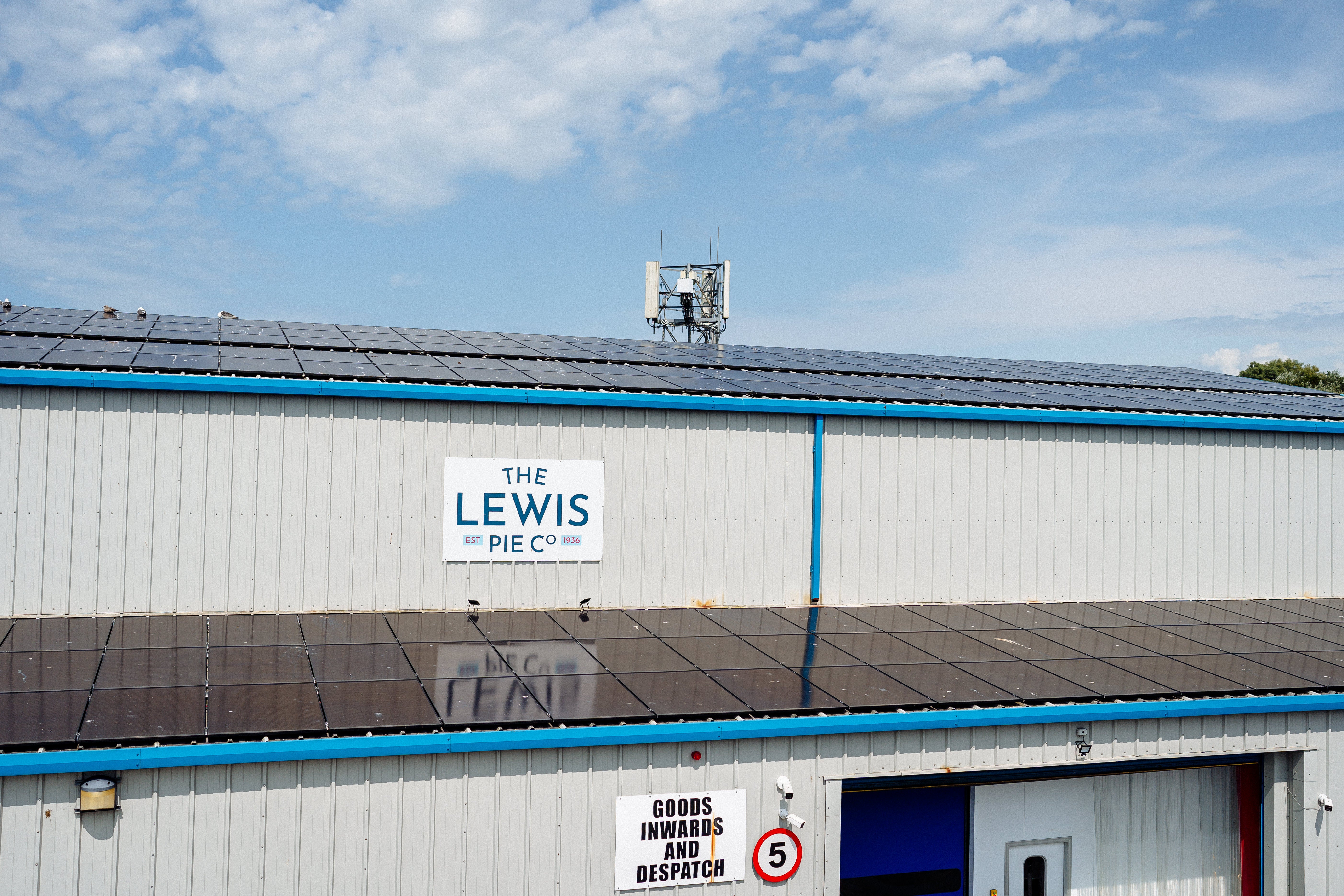
Solar Array 1 – 310 kWh Installation
In Summer 2024, we took a major step forward in renewable energy by commissioning our first solar array on the most modern section of our building, producing up to 310 kWh. As a high-energy user, this system now provides approximately one-third of our total electricity needs. By generating our own clean energy, we’re stabilising our power costs and offering customers greater pricing consistency.
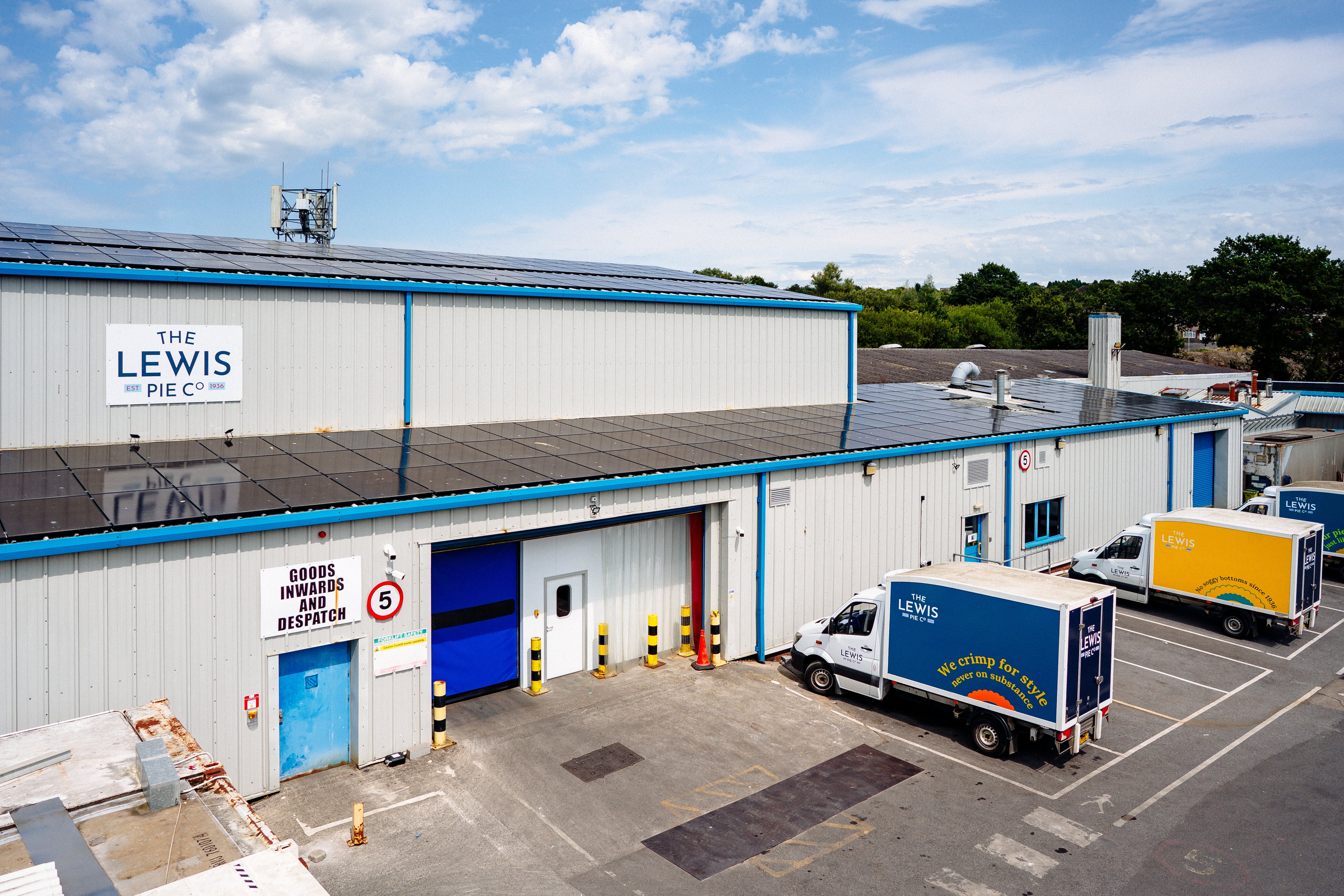
Solar Array 2 – Expansion to 450 kWh Total Capacity
In Summer 2025, we replaced an ageing roof and installed a second solar array with an additional 140 kWh capacity, bringing our total solar output to 452 kWh. This upgrade not only boosts our renewable energy usage but also reinforces our resilience against fluctuating energy markets.
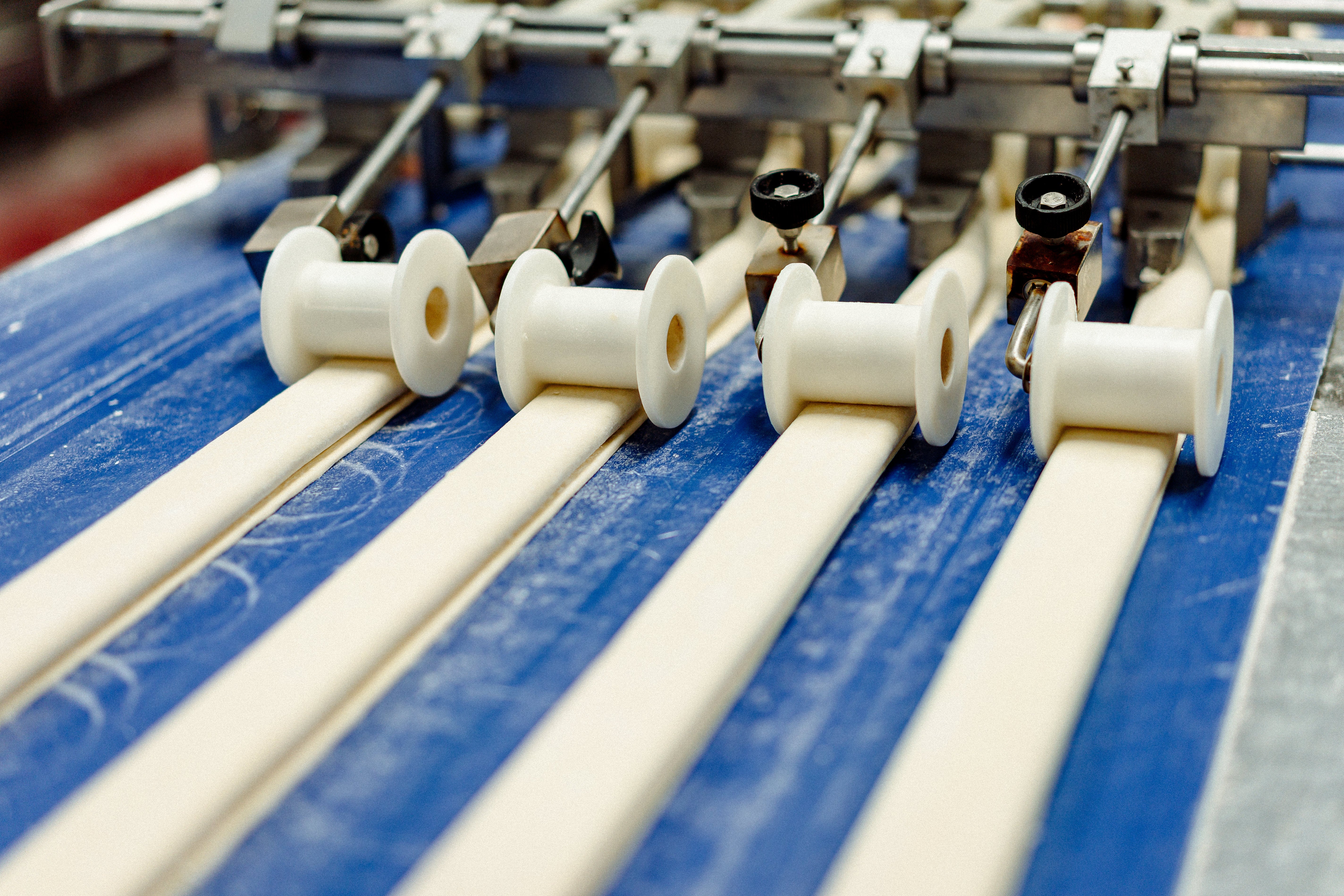
Minimising Waste with Lean Principles
As part of our continuous improvement strategy, we focus on reducing waste across every aspect of our operations. Using the seven wastes of Lean (TIMWOOD) as a guiding framework, we regularly implement small yet impactful changes—from optimising packaging and reducing defects to improving tooling and equipment. These measures help us reduce material waste, lower energy consumption, and streamline production.
During your recent price-negotiation with your contract customers, you avoided a straight cost increase by applying lean manufacturing. How did you pull that off?
"When the request for a price uplift landed on my desk, my instinct was to leave the spreadsheet aside and walk the production floor. I could see straight away that the pastry’s original shape was creating awkward off-cuts, and those trimmings were going straight into waste. On top of that, the geometry meant we could fit fewer pieces on each tray, so our ovens were running longer than they needed to for the same output.
Rather than haggling over percentages, I picked up the phone to the customer’s technical team and invited them in. We laid the data out in real time, stood by the line together and asked a simple question: if we keep the eating quality exactly the same, what happens if we tweak the shape? Within a couple of prototypes we had a design that nested cleanly on the sheeter and filled the trays more efficiently. A two-day pilot run confirmed what we suspected: pastry waste fell by double digits, throughput jumped, and changeovers became smoother because there were no tooling swaps.
Those efficiency gains offset the raw-material inflation, so the customer held their shelf price, we protected our margin, and we both got a sustainability win from throwing less dough in the bin. Lean thinking turned what could have been a difficult price conversation into a shared success story."
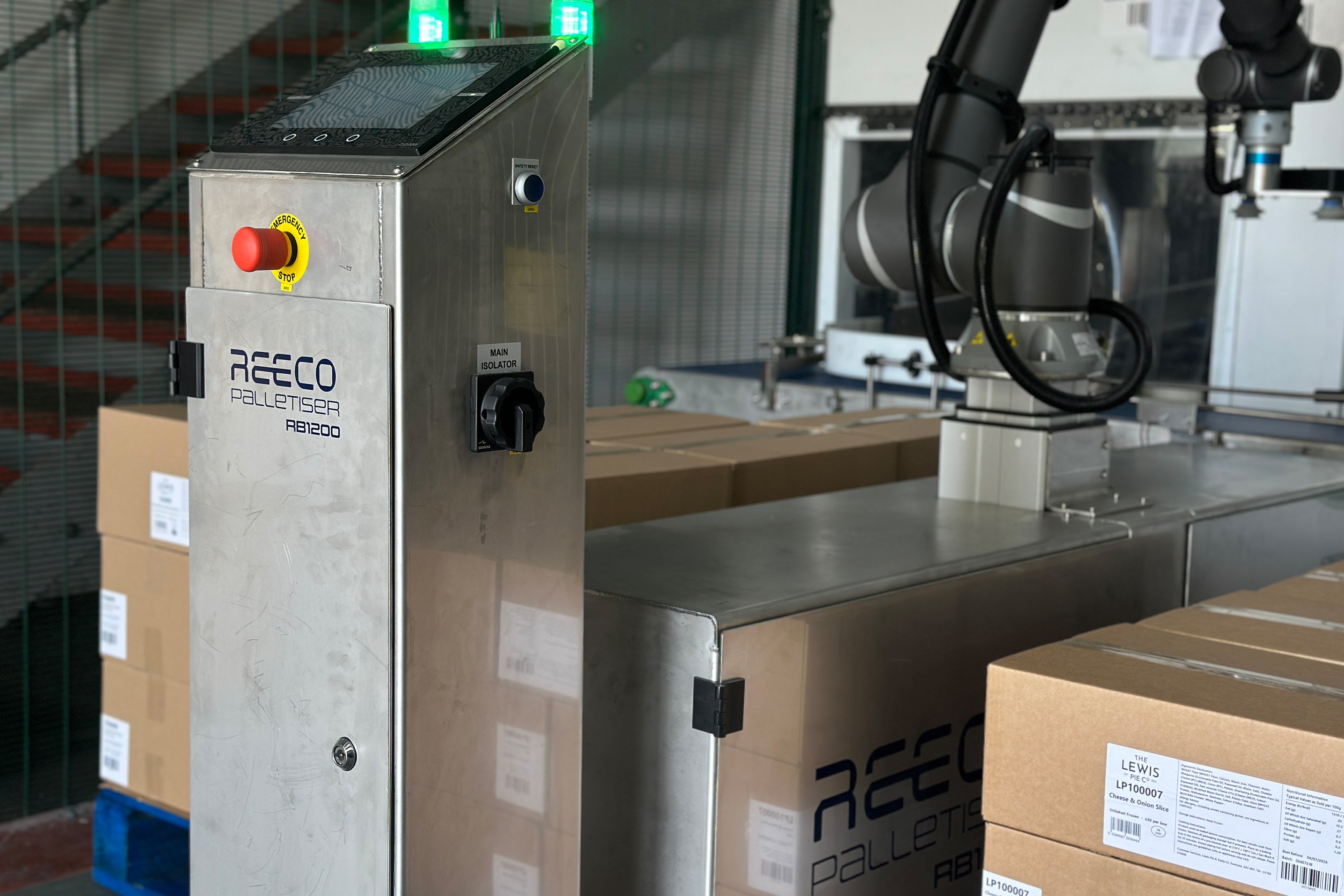
Smart Manufacturing Processes
By carefully analysing and adjusting our operations, we’ve reduced waste from high-energy equipment like ovens and blast freezers. We maximise vertical and horizontal space, improve scheduling, and fine-tune machine usage to increase efficiency and lower environmental impact.
Standardising for Smarter, More Consistent Baking
“We’ve always been focused on making the most of what we’ve got – and this project was a great example of that. As bakeries grow over time, you tend to accumulate equipment from different suppliers. We’d inherited oven racks of all shapes and sizes – some with space for 12 trays, others for 15, 18 or 20. On paper it doesn’t sound like much of a problem, but in reality it was holding us back. The inconsistency meant we weren’t using our oven space efficiently, and it also caused some uneven baking across the racks.
As part of our drive to standardise and embed lean manufacturing, we made the decision to invest in a set of standardised racks. Every single rack now holds the maximum number of trays and completely utilises the vertical space in the oven. The results were instant. Not only did we see a much more even bake – which is critical for quality – but we also increased productivity and the number of cycles available per day. In the best scenarios, we achieved up to a 25% uplift in output without increasing cook time by 25%.
During the same project, we also noticed another variable – the trays themselves. Over the years, we’d ended up with a mix of tray materials and weights, which also affected bake times and consistency. So the next phase of investment will ensure all trays are built to the same spec and are perforated. It’s an invaluable step forward for product quality and another example of how small changes can deliver big results.
What really stood out for me was how the team pulled together to deliver it. From production to engineering, everyone played a role in challenging the old ways and seeing the bigger picture. It’s another step towards building a bakery that’s leaner, smarter and better for the long term.”
Wilf Lewis MD
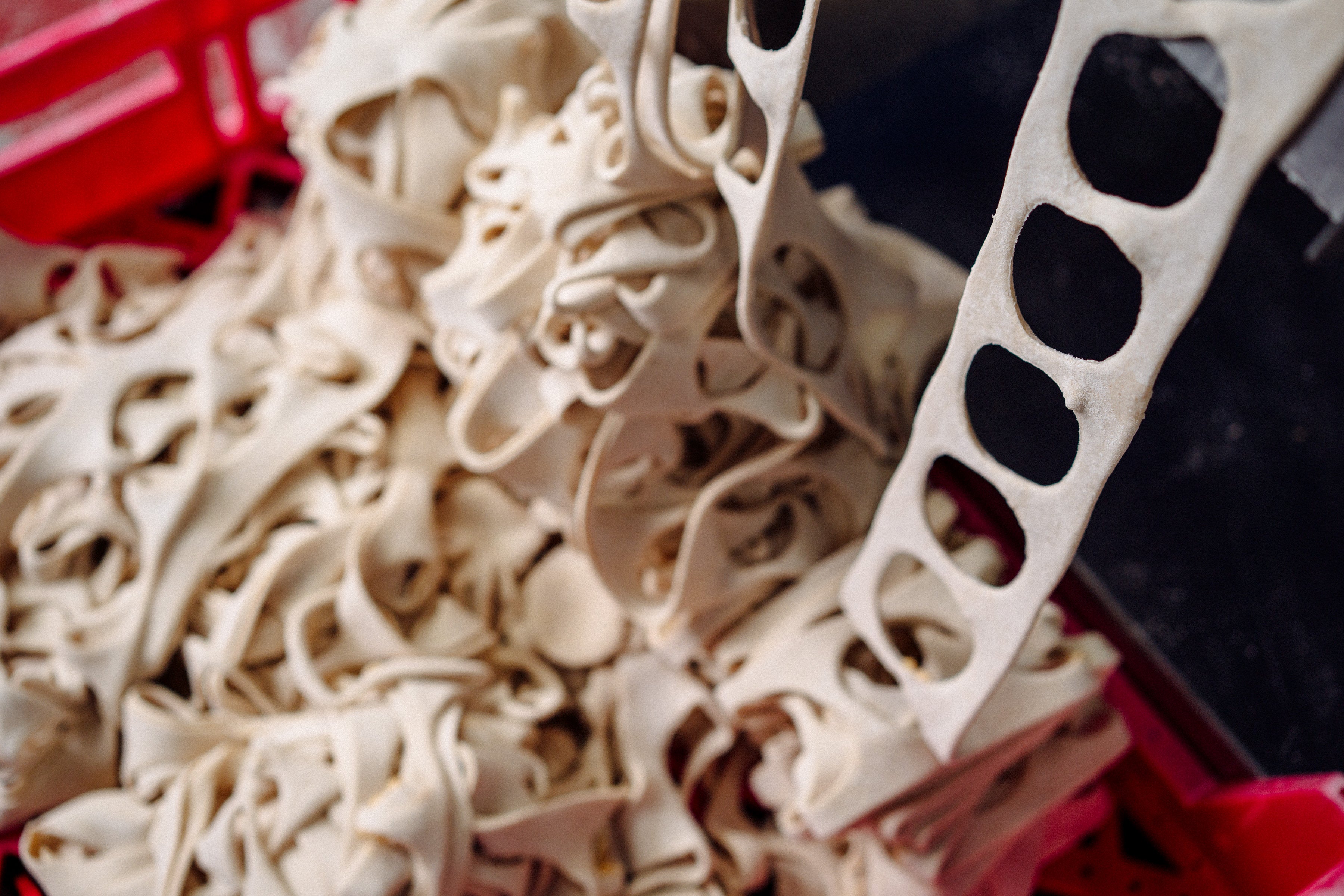
Comprehensive Recycling Across the Business
For several years, we’ve embraced a zero-to-landfill policy, separating all waste streams for recycling from our offices to our production floor. Our food waste is sent to anaerobic digestion facilities, where it’s transformed into green energy, completing the circular economy cycle.
Rethinking Packaging for Leaner, Greener Local Delivery
"This was one of those projects where a simple question led to a big improvement. For years we’d packed our pies in sixes inside cardboard boxes to be sent out on our vehicles across south wales. Those were flow-wrapped, then packed again into outer boxes. It was all done by hand, and while it worked, it created extra steps and materials in the process.
We started to notice that some of our customers were taking the pies out of our boxes as soon as they arrived and sending the empty boxes back to us. More often than not, we’d end up throwing these away – many still in brand-new condition. It didn’t make sense for us or for them, and it was at odds with our sustainability goals.
The team worked on a new system using reusable baskets for delivery. The pies are still flow-wrapped for protection, but now they’re sent to a new packing facility and placed straight into the baskets. We modified the flow wrap to help the customers better manage the dates on their products. The changes removed a number of non-value adding tasks, eliminated unnecessary movement, and cut out tons of cardboard waste. It’s also helped with stock rotation and inventory management at the customer end.
It’s a great example of how listening to your customers and questioning ‘the way it’s always been done’ can unlock smarter, leaner ways of working.”
Neil George - Operations Director
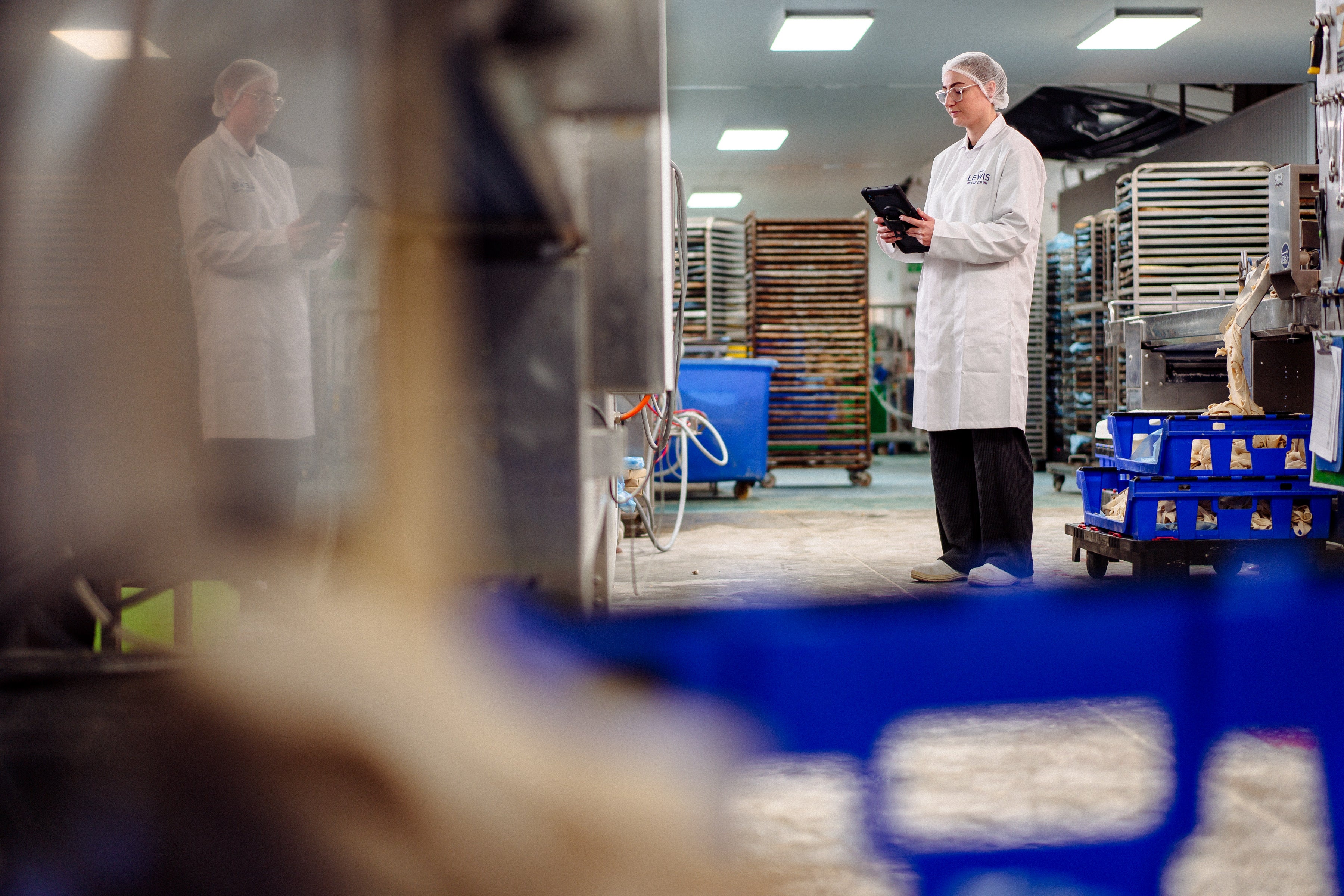
Trackable Waste Management
Our team is fully trained in waste tracking procedures. If you can't record it you can't improve it. Every disposal point across our facility includes recording stations where staff log the type and amount of waste. These data points give us insight into where we can take action to reduce, eliminate, or repurpose waste, further improving our processes and sustainability outcomes This helps us maintain our site at 0% to landfill.
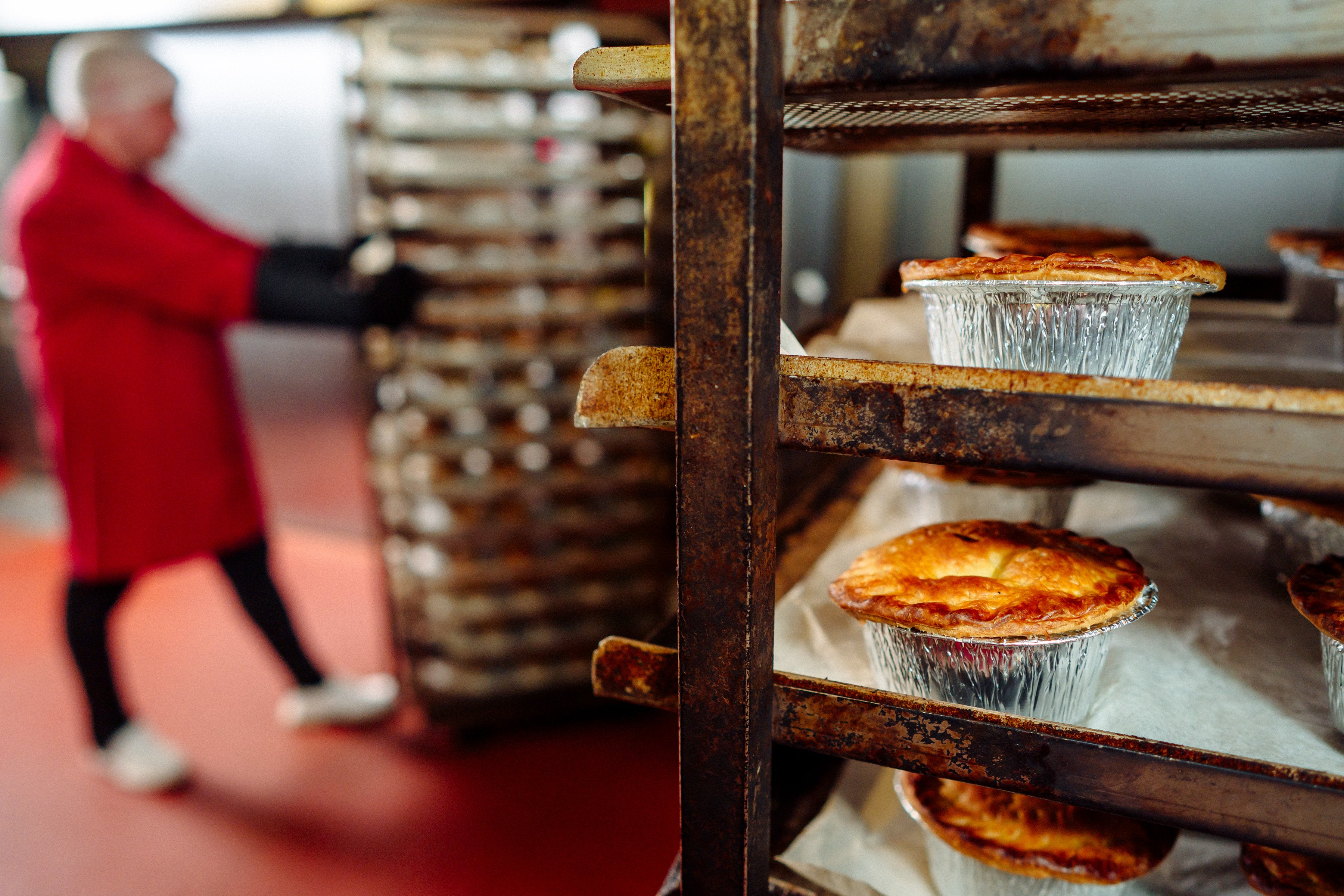
Why It Matters
By investing in renewable energy, lean production, and responsible waste management, The Lewis Pie Co is proud to play its part in building a more sustainable food manufacturing industry. We believe that great pies shouldn’t cost the Earth and we’re proving it every day. We want our teams to be able to talk to their families and show them we are doing our bit to make the planet a brighter place.








